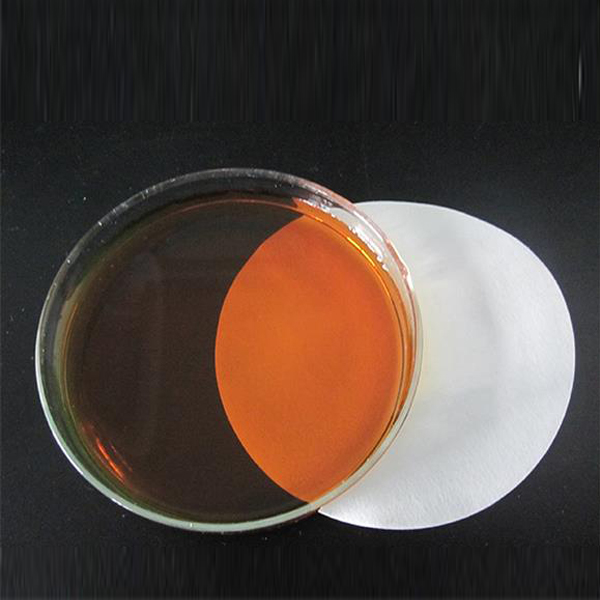
News
Jul . 28, 2024 01:01 Back to list
Exploring the Role of Viscous Chelators in Enhancing Metal Ion Removal Efficiencies in Various Applications
Understanding Viscous Chelators Enhancing Metal Ion Removal
Viscous chelators have garnered significant attention in various fields, including environmental science, medicine, and industrial applications. By understanding the properties and applications of these compounds, we can better appreciate their role in metal ion removal and the broader implications for health and the environment.
What are Chelators?
A chelator is a molecule that can bind to metal ions to form a stable complex. This process is known as chelation. Chelators are vital in multiple applications, from detoxifying harmful metals in biological systems to removing excess metal ions in industrial processes. Viscous chelators specifically refer to those that possess a higher viscosity when in solution, which can enhance their functional properties.
The Importance of Viscosity
The viscosity of a chelator can significantly influence its performance. Viscous chelators often exhibit improved contact with metal ions due to increased surface area interaction and prolonged retention time in the system. This property makes them particularly useful in applications where effective and efficient metal ion removal is critical, such as in wastewater treatment and medical treatments for heavy metal poisoning.
Applications of Viscous Chelators
1. Environmental Remediation Viscous chelators play a crucial role in environmental cleanup efforts. They can be used to remediate contaminated soils and groundwater by binding to heavy metals like lead, cadmium, and mercury, making them less bioavailable and easier to remove from the environment. Their viscosity aids in creating a cohesive mass that can effectively trap these metals, facilitating their extraction.
viscous chelator

2. Medical Treatments In medicine, viscous chelators are utilized in chelation therapy to treat metal poisoning. Drugs such as dimercaptosuccinic acid (DMSA) and ethylenediaminetetraacetic acid (EDTA) are classified as chelators, and their ability to form bonds with toxic metals helps in their elimination from the body. The viscous nature of these chelators can improve their residence time in the gastrointestinal tract, enhancing their absorption and effectiveness in systemic treatments.
3. Industrial Processes In various manufacturing processes, especially in metal finishing and plating, viscous chelators are employed to control metal ion concentrations and prevent undesirable precipitation. Their ability to maintain metals in solution can enhance product quality and yield, reducing waste and improving environmental compliance.
Challenges and Considerations
While viscous chelators offer several advantages, their use poses specific challenges. For instance, higher viscosity can also lead to difficulties in handling and application. The formulation of these chelators must ensure that their benefits are maximized while minimizing potential drawbacks, such as potential toxicity or environmental impact. Furthermore, the cost of viscous chelators can be a limiting factor in their widespread use, necessitating ongoing research into more cost-effective alternatives.
Future Directions
As research continues to evolve, there is a growing interest in developing new formulations and combinations of viscous chelators that can offer enhanced performance. Advances in biotechnology and nanotechnology may open new avenues for creating more effective chelators that can operate under diverse environmental conditions. Additionally, improved understanding of the mechanisms of metal ion binding will contribute to the design of chelators tailored for specific applications.
Conclusion
Viscous chelators represent a vital tool in the ongoing effort to manage metal ion pollution and improve health outcomes in metal poisoning cases. Their unique properties facilitate a wide range of applications across various sectors. As research continues to unveil the potential of these compounds, we can anticipate significant advancements that enhance their effectiveness and expand their utility in both environmental and medical fields. Exploring these developments will be crucial for addressing some of the pressing challenges related to metal contamination and exposure in the modern world.
-
Polyaspartic Acid Salts in Agricultural Fertilizers: A Sustainable Solution
NewsJul.21,2025
-
OEM Chelating Agent Preservative Supplier & Manufacturer High-Quality Customized Solutions
NewsJul.08,2025
-
OEM Potassium Chelating Agent Manufacturer - Custom Potassium Oxalate & Citrate Solutions
NewsJul.08,2025
-
OEM Pentasodium DTPA Chelating Agent Supplier & Manufacturer High Purity & Cost-Effective Solutions
NewsJul.08,2025
-
High-Efficiency Chelated Trace Elements Fertilizer Bulk Supplier & Manufacturer Quotes
NewsJul.07,2025
-
High Quality K Formation for a Chelating Agent – Reliable Manufacturer & Supplier
NewsJul.07,2025
